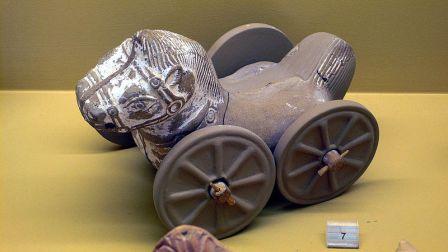Daily Life in Ancient Rome
After a modest breakfast, a normal Roman day would commence with work. Many Romans would quickly visit the baths to take a bath and mingle after work in the early afternoon. They would have dinner, which was more of a social gathering than a meal, at about three o’clock.

Daily Life in Ancient Rome
Ancient Roman Jobs
The complex civilization of ancient Rome necessitated a wide range of vocations and abilities to remain functional. The majority of the manual labor was done by slaves. Among the occupations held by Roman citizens are the following:
- Farmer: Most of the Romans who lived in the countryside were farmers. The most common crop was wheat, which was used to make bread.
- Soldiers: The Roman Army was large and needed soldiers. The army was a way for the poorer class to earn a regular wage and to gain some valuable land at the end of their service. It was a good way for the poor to move up in status.
- Merchants: Merchants of all sorts sold and bought items from around the Empire. They kept the economy rolling and the Empire rich.
- Craftsmen: From making dishes and pots to crafting fine jewelry and weapons for the army, craftsmen were important to the empire. Some craftsmen worked in individual shops and learned a specific craft, usually from their father. Others were slaves who worked in large workshops that produced items in large quantities, such as dishes or pots.
- Entertainers: The people of ancient Rome liked to be entertained. Just like today, there were a number of entertainers in Rome, including musicians, dancers, actors, chariot racers, and gladiators.
- Lawyers, Teachers, and Engineers: The more educated Romans could become lawyers, teachers, and engineers.
- Government: The government of ancient Rome was huge. There were all sorts of government jobs, from tax collectors and clerks to high-ranking positions like senators. The Senators were wealthy and powerful. Senators served in their positions for life, and at times there were as many as 600 members of the Senate.
Family in ancient Rome
For the Romans, the family unit held great significance. The father, known as the paterfamilias, was the leader of the household. He was the family’s sole powerholder legally. But generally speaking, the wife had a lot of influence over family decisions. She frequently took care of the household management and finances.
School in ancient Rome
Roman kids began attending school at the age of seven. Rich kids would have full-time tutors teaching them. Some kids attended public schools. They studied debate, literature, arithmetic, writing, and reading. Boys attended school primarily, however some affluent girls received at-home tutoring. Poor kids were not allowed to attend school.

Food in ancient Rome
The majority of Romans consumed little during the day and had a light breakfast. Then there would be a big feast. Around three o’clock in the afternoon, the big dinner ceremony began. The servants would tend to them while they lay on their sides on a couch. Throughout the dinner, they frequently washed their hands in water and used their hands to eat.
Bread, beans, fish, veggies, cheese, and dried fruit would have been typical foods. They didn’t consume much meat. Rich people would have served a wide range of dishes in elegant sauces. The appearance of the food held equal significance to its flavor. We would find it unusual that they consumed foods like mice and peacock tongues.
Clothing in ancient Rome
Toga: The toga was a lengthy garment consisting of multiple yards of fabric. Rich people wore white linen or wool togas. Certain togas included markings and colors that were only appropriate for particular individuals or situations. High ranking senators and consuls, for instance, might wear togas with a purple border, but black togas were typically reserved for mourning. The toga was often only worn in public, not at home, because it was difficult and inconvenient to wear. Later on, the toga fell out of favor, and most individuals chose to dress in a tunic and cloak during cold weather.
Tunic: It was more of a long shirt than a tunic. The wealthy wore tunics under their togas and about the house. They were the typical attire of the impoverished.
Read also: The fall of Roman empire
 The First Encyclopedia Your First Knowledge Home
The First Encyclopedia Your First Knowledge Home
